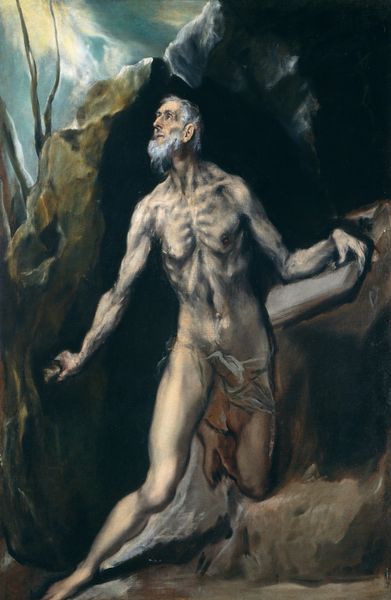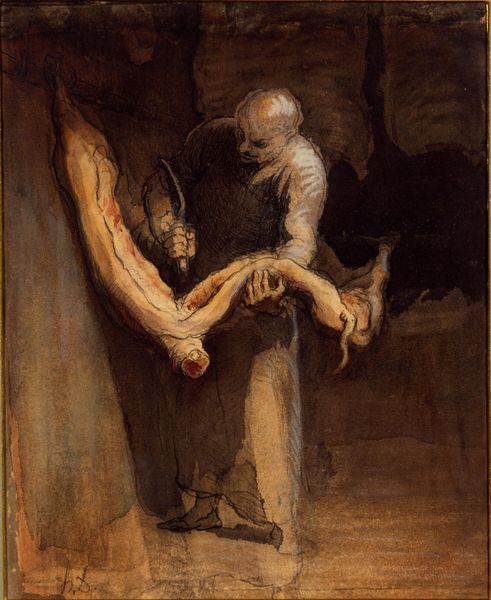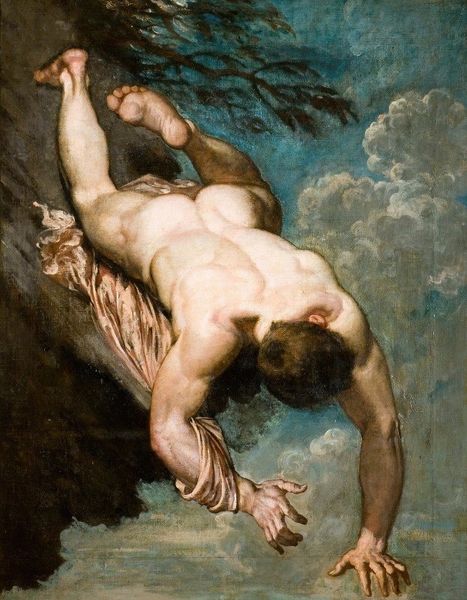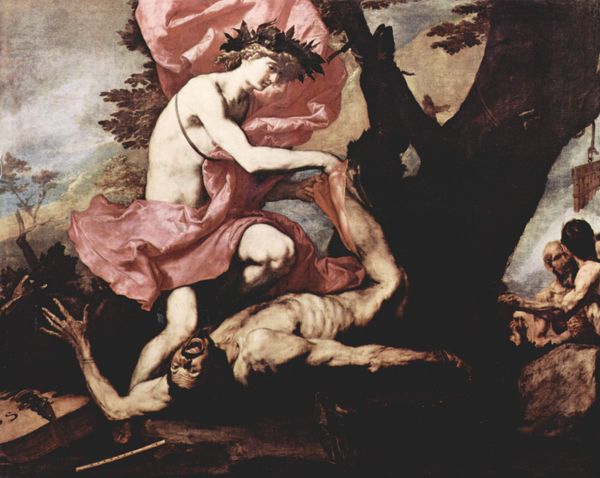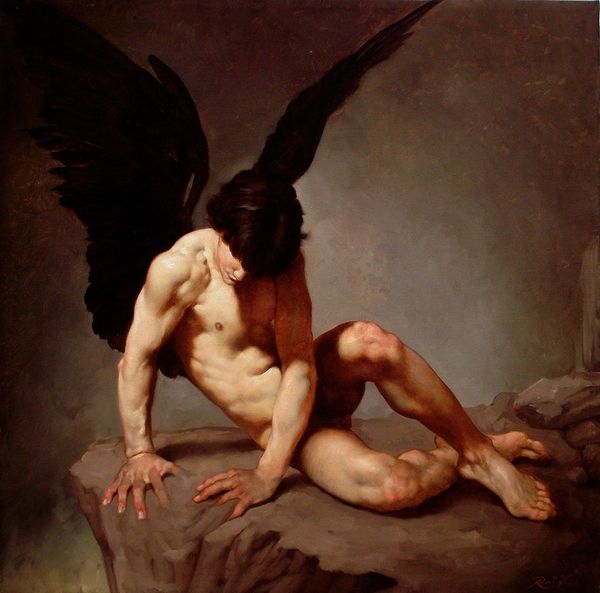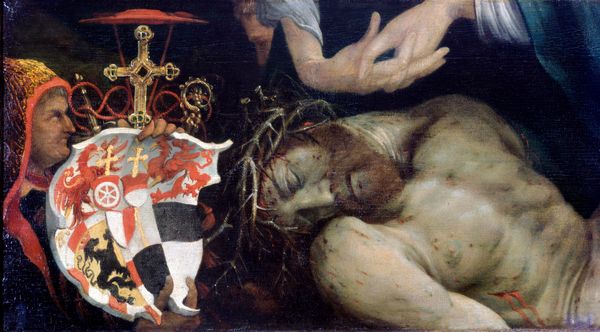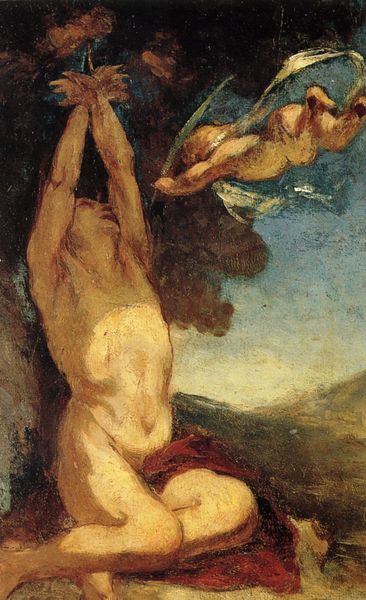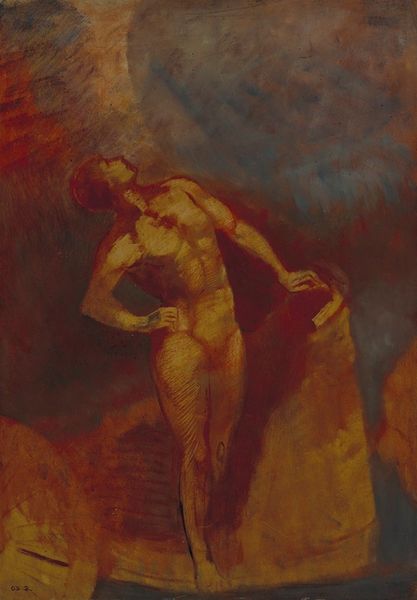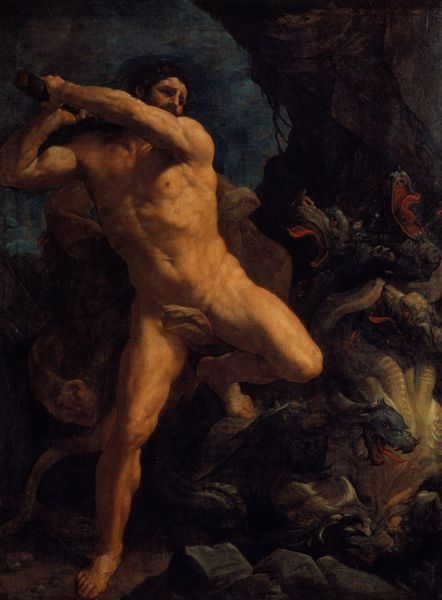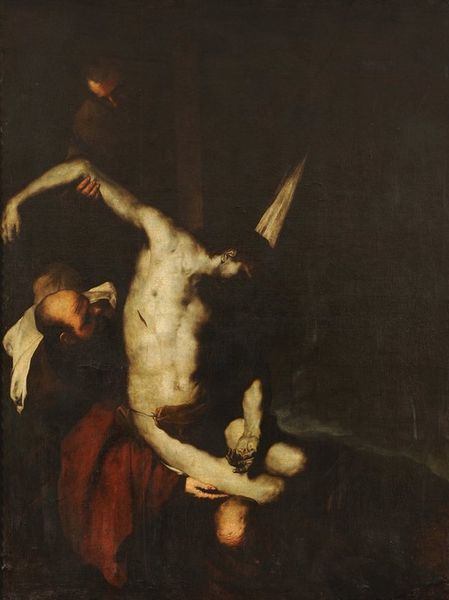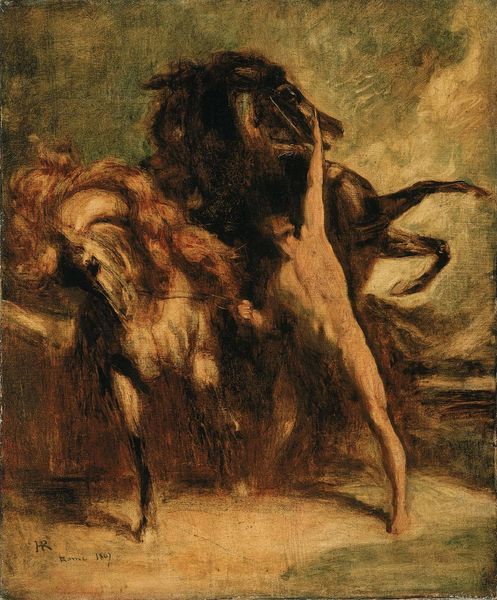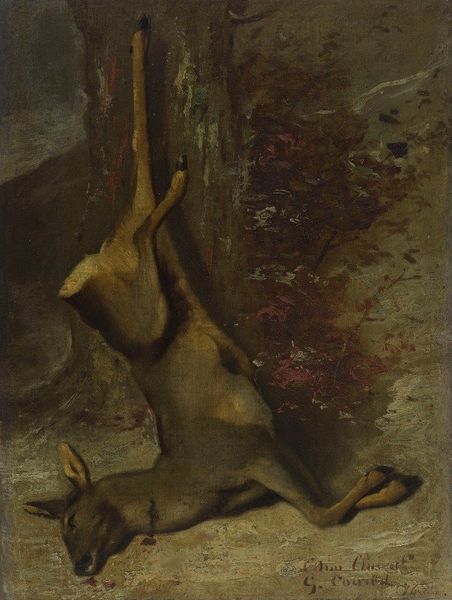
painting, oil-paint
#
painting
#
oil-paint
#
figuration
#
oil painting
#
roman-mythology
#
romanticism
#
mythology
#
genre-painting
#
history-painting
#
grotesque
Dimensions: 83 x 146 cm
Copyright: Public domain
A monstrous figure with a tangle of wild grey hair lurches into the picture frame. His eyes bulge, shockingly luminous against the suffocating black of the background. In his hands, he clutches the lifeless body of an infant. Blood seeps from his mouth. This is Saturn, the god of time, caught in the act of eating his child. 😱 Francisco Goya (1746-1828) was a Spanish Romantic painter. He is best known for the late body of work now termed the Black Paintings, to which ‘Saturn Devouring One of His Sons’ (1823) belongs. The Black Paintings are a series of 14 works originally painted directly onto the walls of Goya’s house near Madrid. Following the artist’s death in 1828, the oil murals were discovered and transferred to canvas. The Black Paintings explore sombre and frightening themes, from dark magic and death to isolation and war. Alongside their disturbing subjects, the works are united by their murky colour palette. ⚫️ This painting, now known as ‘Saturn Devouring One of His Sons’, was not originally titled by the artist and not intended to be seen by public eyes. It depicts the God of time, Saturn (also known as Cronus). In Greek and Roman mythology, Saturn ate his newborn children to prevent being overthrown by one of his sons – as was foretold in a prophecy. Ultimately, Saturn’s frenzied act backfired when the child Jupiter escaped and eventually murdered his father. 🗡️ Here, the dark colour palette creates apprehension in the mind of the viewer. Thick brushstrokes reinforce the impression of intensity and violence. According to critics, the psychological terrors explored in this painting reflect both the social and personal turbulence experienced by Goya in the early nineteenth century. Could Goya, in his seventies at the time of painting this series, have been contemplating his own mortality and unsettled state of mind? Does this painting speak to the political unrest at the time of the Napoleonic Wars? How can the original private context of the work impact our interpretation of it? 💭 Editor: Lucy Jude Grantham
Comments
No comments
Be the first to comment and join the conversation on the ultimate creative platform.

